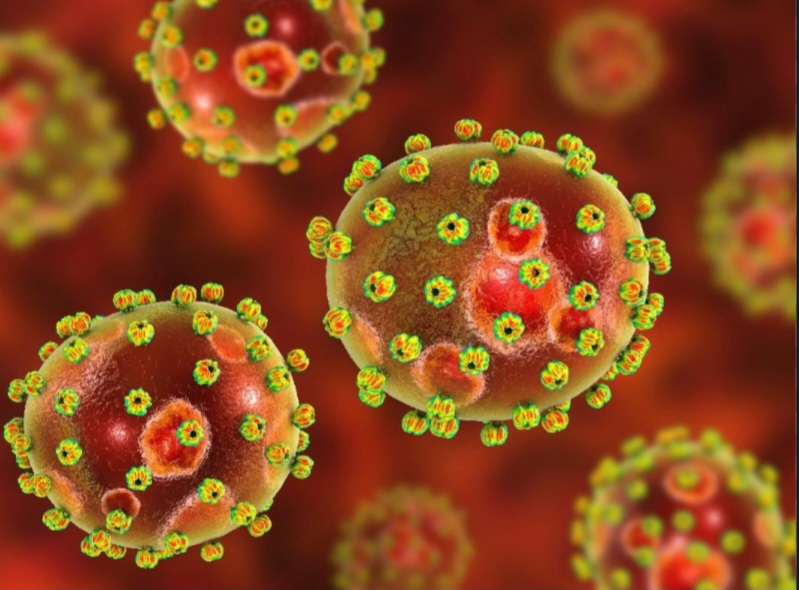
Temitayo Olumofe
The Nigeria Centre for Disease Control and Prevention (NCDC) on Thursday, November 19, 2025, released a disturbing update on the Lassa fever outbreak in the country. According to the official report, Nigeria has recorded 966 confirmed cases and 177 deaths across 21 states within the first 10 months of 2025. This represents a case fatality rate (CFR) of 18.3 percent—higher than the 16.5 percent recorded during the same period in 2024.
Lassa fever is a viral haemorrhagic illness that spreads primarily through contact with food or household items contaminated with rodent urine or feces. Many Nigerians live daily under the shadow of this often misunderstood disease, especially during its peak seasons. For affected families, the outbreak is not just about numbers or statistics—it is about loved ones lost, lives disrupted, and communities shaken.
Mrs. Amina, a market vendor in Ondo State—one of the hardest-hit states—shared her painful experience.
“My husband fell sick suddenly. We thought it was malaria at first. It was only when the doctors confirmed it was Lassa fever that we understood the seriousness,” she said in a trembling voice. Sadly, she lost him within days. Her story mirrors the silent suffering of many Nigerians who face limited access to early diagnosis and effective treatment.
The NCDC report reveals that four states—Ondo, Bauchi, Edo, and Taraba—account for 87 percent of all confirmed Lassa fever cases this year. This clustering indicates sustained transmission in these regions and highlights the urgent need for targeted interventions.
According to the latest epidemiological update released on November 19, 2025, the outbreak remains widespread, with 102 Local Government Areas affected nationwide. The agency also noted a slight increase in new cases, with 12 confirmed in epidemiological week 44 alone, compared to 11 cases the previous week—showing the persistent public health threat posed by the disease.
Health workers remain on the frontlines of the response. Reassuringly, the most recent report recorded no new healthcare worker infections in the last week. The NCDC continues to urge all healthcare professionals to maintain a high index of suspicion and ensure early referral of patients showing symptoms to improve survival chances. The agency also appealed to the public to remain vigilant and strictly adhere to preventive measures.
In response to the growing crisis, the NCDC and the National Lassa Fever Technical Working Group (TWG) have intensified control efforts. Key measures include the deployment of 10 National Rapid Response Teams to affected states and the launch of an Infection Prevention and Control (IPC) e-learning platform. Updated Viral Haemorrhagic Fever IPC guidelines have also been distributed to healthcare facilities nationwide to encourage safer patient management and limit disease spread.
States such as Lagos are actively distributing thermometers to contacts of infected persons for early detection through temperature monitoring. Meanwhile, in Bauchi, Ebonyi, and Benue States, health workers have received additional case management training with support from the World Health Organization (WHO), strengthening their capacity to handle the disease.
The NCDC has emphasized the critical need for sustained investment in state-level systems for early detection, prevention, and rapid response to outbreaks. This strategy is essential to reducing both the incidence and fatality rate of Lassa fever in future epidemics.
Lassa fever is caused by the Lassa virus and is transmitted mainly through rodents such as the multimammate rat. Human infection occurs through exposure to rodent urine or feces, contact with contaminated objects, or person-to-person transmission—especially in healthcare settings without strict infection control.
Symptoms often begin with fever, weakness, and headaches, and may progress to severe complications including bleeding, respiratory distress, and neurological problems. Early diagnosis and treatment with antiviral drugs such as ribavirin are crucial for improving survival rates. Unfortunately, many patients seek medical care late or are misdiagnosed due to symptom similarities with other tropical diseases like malaria and typhoid fever. The elevated fatality rate recorded this year underscores the urgent need for increased awareness, early diagnosis, accessible treatment, and stronger public health preparedness.
The NCDC’s data further confirms that controlling Lassa fever is not only a medical challenge but a community responsibility. Preventing rodent infestations in homes and markets, maintaining proper hygiene, and avoiding contact with suspected cases are vital individual actions. Educating communities and dismantling myths surrounding the disease can empower people to seek timely care and comply with health advisories. Given Nigeria’s diverse socio-economic landscape and uneven access to healthcare, community engagement remains central to outbreak control.
The lives lost and the struggles of people like Mrs. Amina reflect the heavy human cost behind the statistics. The fight against Lassa fever demands collective action—from government agencies, healthcare workers, and communities to individual citizens—to protect millions from this recurring threat.
The NCDC’s announcement on November 19, 2025, stands as a sober reminder of Nigeria’s ongoing battle with Lassa fever. It challenges the nation to strengthen preparedness, invest in resilient health systems, and foster community participation to reduce the devastating toll of future outbreaks.
